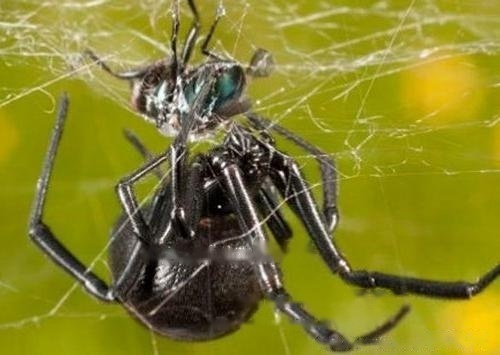Because the female black widow spider will slowly eat her mate during the mating process, it has been given the folk name black widow. Like all carnivorous spiders, it traps animals with its webs and stuns them with venomous juices. The captured small animals are then decomposed into liquid for consumption. So be careful when feeding it, what should we pay attention to?

black Widow spiders
They generally feed on a variety of insects. From a biological point of view, this spider is a beneficial insect because it eats a lot of pests; but it is easy to hurt people, so it is also a pest. When the prey gets tangled in the web, the black widow spider rushes out of the habitat, wrapping the prey securely in the tough web, then piercing the prey and injecting the toxin. The toxin takes effect in about 10 minutes, during which time the prey is always held tightly by the spider. When the prey's activity ceases, the spider injects digestive enzymes into the wound. Black widow spiders then bring their prey back to their habitat to be used or eaten on the spot.
Black widow spiders are typical self-eaters: not only do female spiders eat their male spiders after mating, but when living conditions are difficult and food is lacking, they even eat their own species. Sometimes the spider growing in a nest of small spiders grows entirely by feeding on its companions, which perfectly expresses its animal optimization ability for survival of the strong.
Female black widow spiders live two to three years, male spiders six to seven months. Spiders are very productive. After mating, female spiders store semen. When conditions are good, they will lay eggs every 25-30 years, and they can lay 5,000 eggs in their lifetime. Each nest of small spiders takes about 12-14 days to hatch, and they live together for about 14 days. Then they pull the silk from the belly and float down the wind. The landing point of the spider silk is their landing point. start a new life.
Black Widow's venom is 15 times more potent than prairie rattlesnakes, and it is worth thousands of times more than gold in the American market, at least $2.3 million an ounce, and in addition The strength of its spider silk exceeds that of all known natural fibers, and even the well-known tough steel wire and Kevlar fiber are far behind. times.

Subscribe to Newsletter
Professional platform for pets, dogs and cats.
![[Dog Training 5] The training method of pet dog dining etiquette](/static/img/12192/12192_1.jpg)




